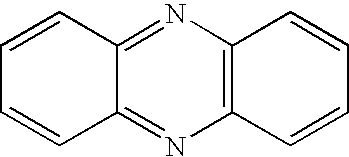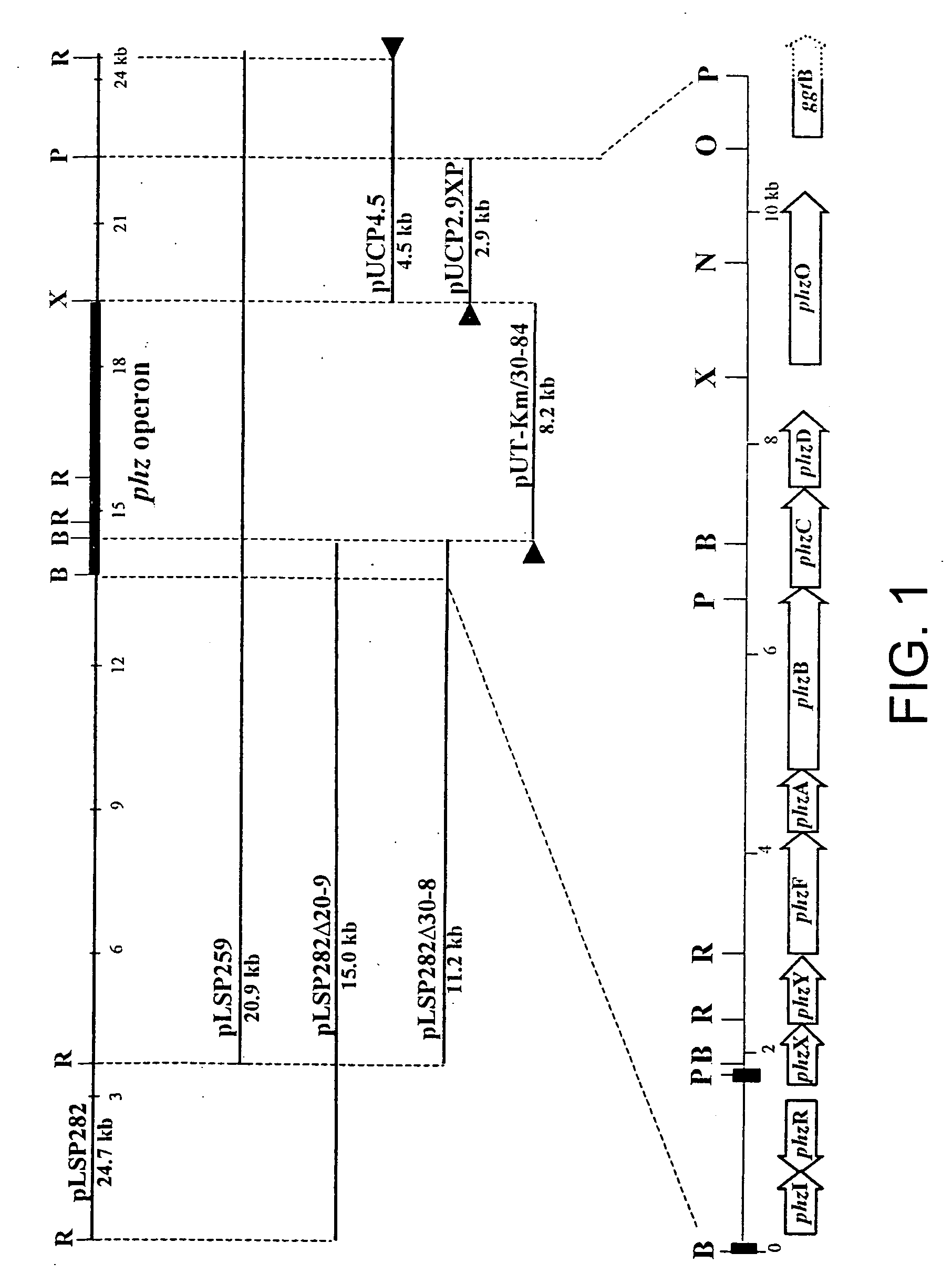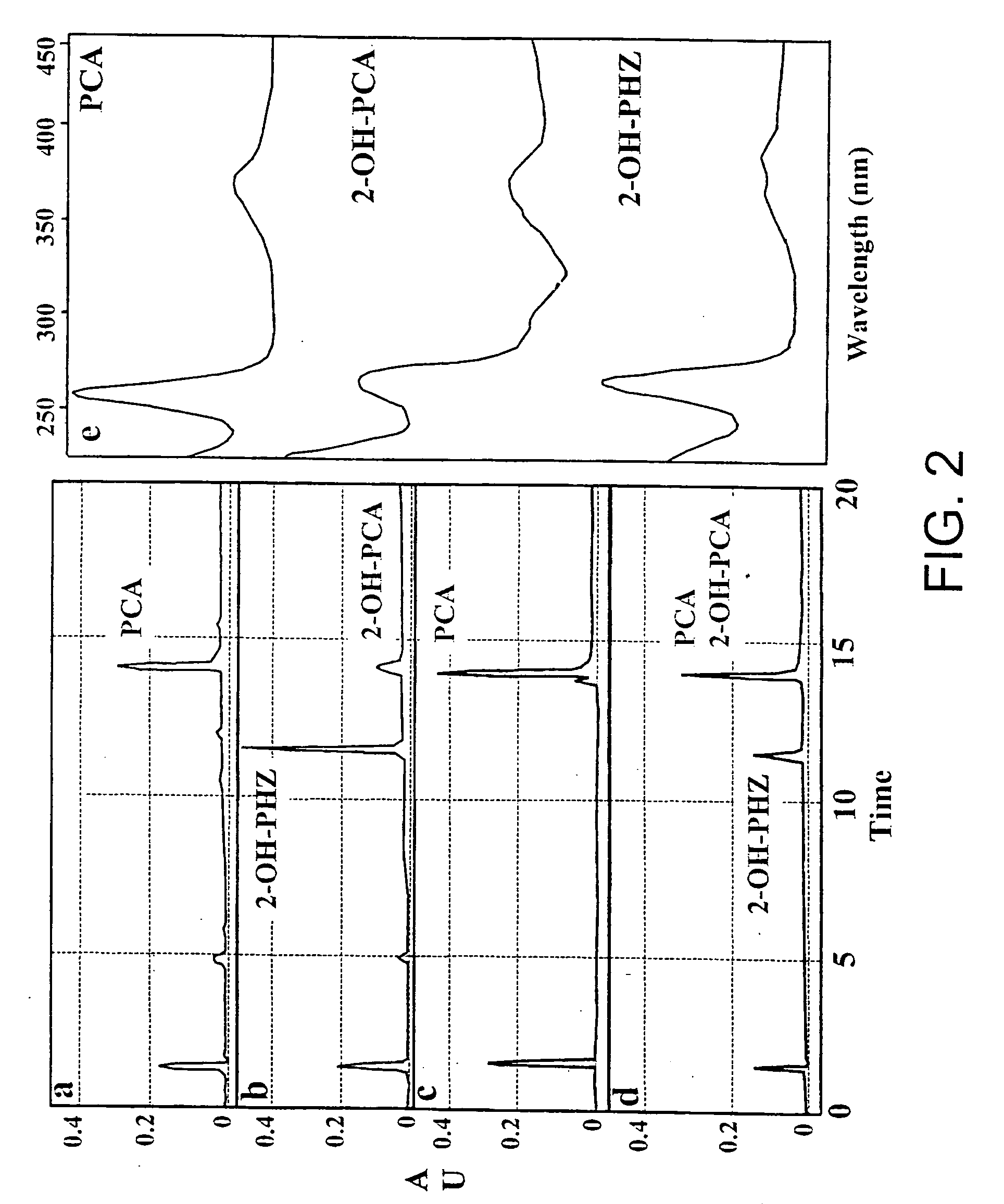Sequences encoding PhzO and methods
a sequence and sequence technology, applied in the field of sequences encoding phzo and methods, can solve the problems of plant premature death, significant economic loss, and adverse impact on the production of important crops in the world
- Summary
- Abstract
- Description
- Claims
- Application Information
AI Technical Summary
Benefits of technology
Problems solved by technology
Method used
Image
Examples
Embodiment Construction
[0220] The following example is intended only to further illustrate the invention and is not intended to limit the scope of the invention which is defined by the claims. Materials and Methods.
[0221] Bacterial Strains and Plasmids. The bacterial strains and plasmids used in this study are described in Table 1. Rifampicin-resistant derivatives of P. fluorescens strains 2-79, M4-80R, Q8r1-96, and P. chlororaphis 30-84 (referred to here by its original designation, P. aureofaciens 30-84) were used. Pseudomonas strains were grown at 28.degree. C. in Luria-Bertani (LB) broth, 2XYT broth (Sambrook et al, 1989, supra), or M9 minimal medium (Ausubel et al., Short Protocols in Molecular Biology, John Wiley & sons, Inc., New, N.Y.) supplemented with sodium citrate to a final concentration of 40 mM as a carbon source. E. coli strains were grown in LB broth or 2.times.YT broth at 28.degree. C. or 37.degree. C. To enhance phenazine production, Pseudomonas strains were grown in LB supplemented wit...
PUM
| Property | Measurement | Unit |
|---|---|---|
| molecular mass | aaaaa | aaaaa |
| Tm | aaaaa | aaaaa |
| Tm | aaaaa | aaaaa |
Abstract
Description
Claims
Application Information
 Login to View More
Login to View More - R&D
- Intellectual Property
- Life Sciences
- Materials
- Tech Scout
- Unparalleled Data Quality
- Higher Quality Content
- 60% Fewer Hallucinations
Browse by: Latest US Patents, China's latest patents, Technical Efficacy Thesaurus, Application Domain, Technology Topic, Popular Technical Reports.
© 2025 PatSnap. All rights reserved.Legal|Privacy policy|Modern Slavery Act Transparency Statement|Sitemap|About US| Contact US: help@patsnap.com



